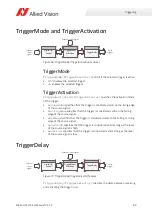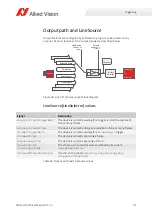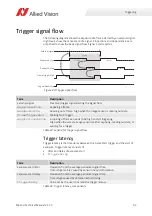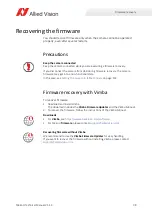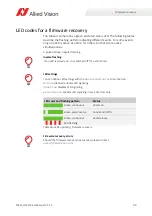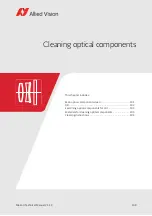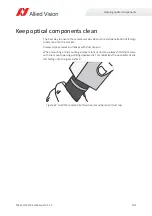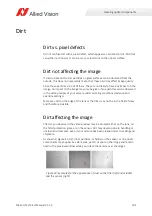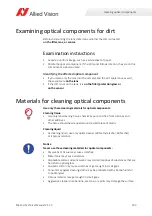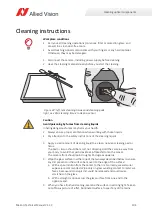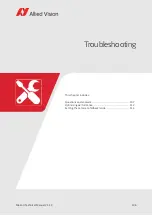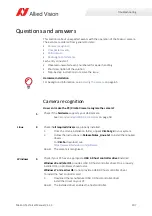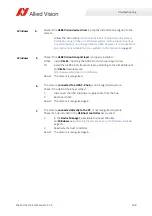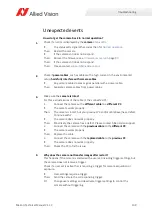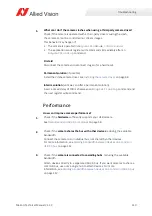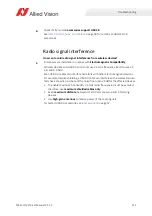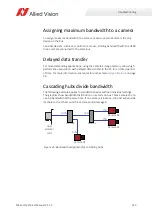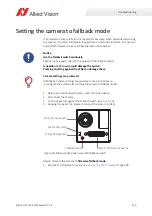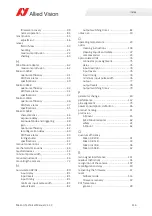
Cleaning optical components
103
Mako U Technical Manual V1.1.3
Examining optical components for dirt
Before dismounting the lens, determine whether the dirt is situated
on the filter, lens, or sensor.
Examination instructions
1. Acquire a uniform image, such as a white sheet of paper.
2. Rotate the optical component. If the dirt spots follows rotation, they are on this
component‘s optical surface.
Identifying the affected optical component
•
If you rotate only the lens (not the camera) and the dirt spots move as well,
these spots are
on the lens
.
•
If the dirt is not on the lens, it is
on the filter/protection glass or
on the sensor
.
Materials for cleaning optical components
Use only these cleaning materials for optical components:
Cleaning tissue
•
Use only lens cleaning tissue chemically pure and free from silicones and
other additives.
•
The tissue should be wrapped around a small piece of plastic.
Cleaning liquid
•
As cleaning liquid, use only optics cleaner (60% ethyl alcohol, 40% ether)
or isopropyl alcohol.
Notice
Never use these cleaning materials for optical components:
•
Dry swabs or tissue may cause scratches.
•
Metal tools may cause scratches.
•
Disposable cotton cosmetic swabs may contain residues of substances that are
harmful to optical glass.
•
Cosmetic cotton my cause scratches or get caught in small gaps.
•
Consumer eyeglass cleaning cloths may be pretreated with silicone harmful
to optical glass.
•
Fibrous material may get caught in small gaps.
•
Aggressive cleaners like benzine, acetone, or spirits may damage the surface.

